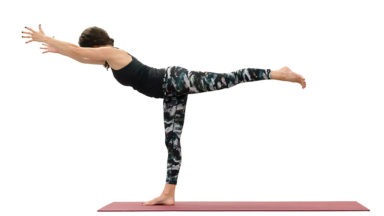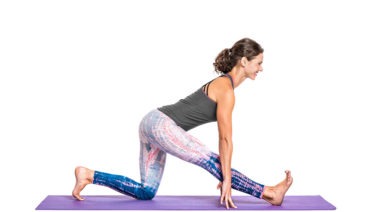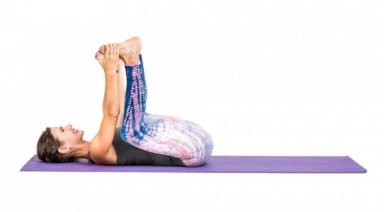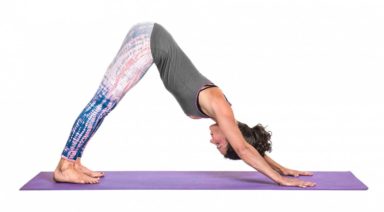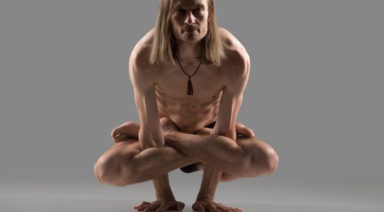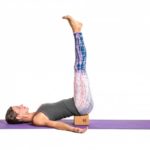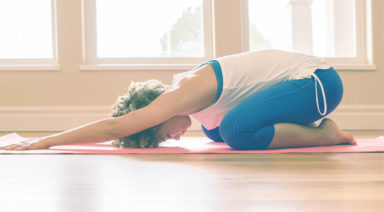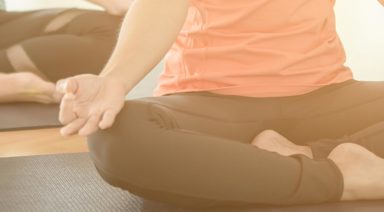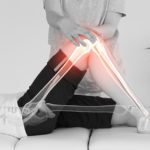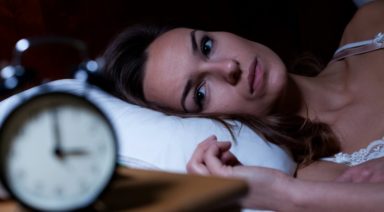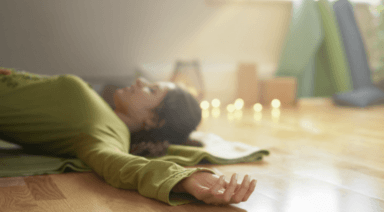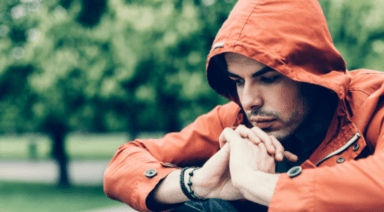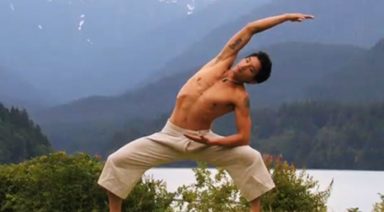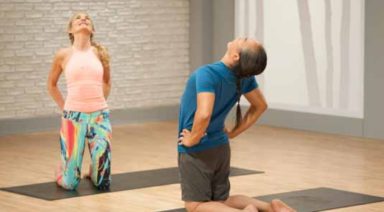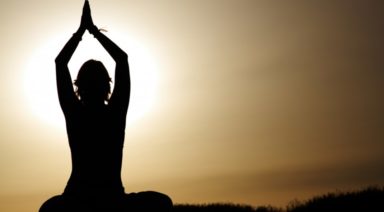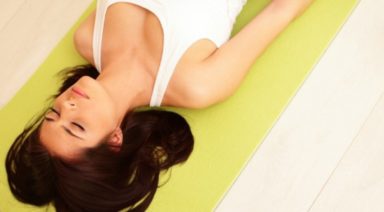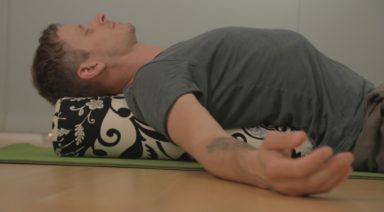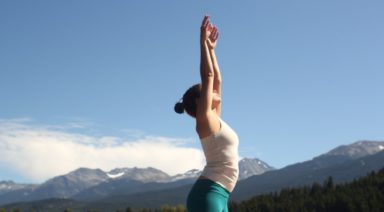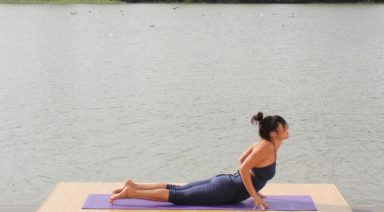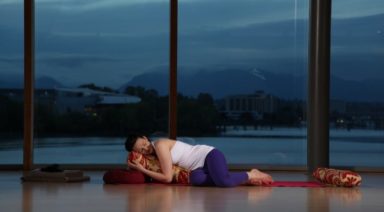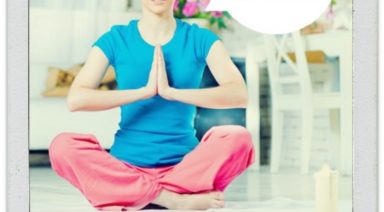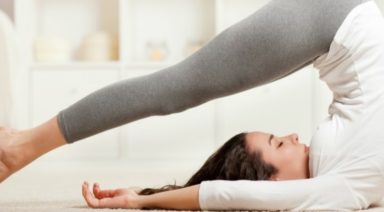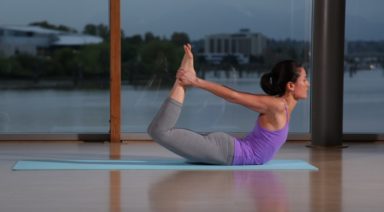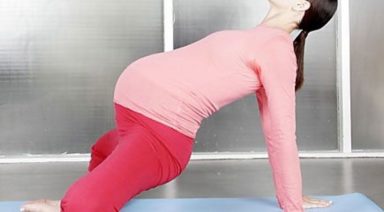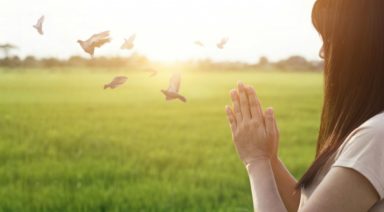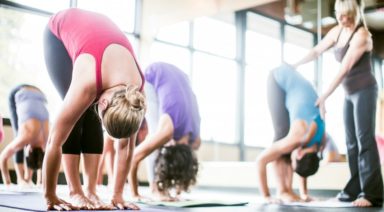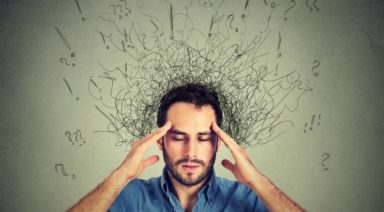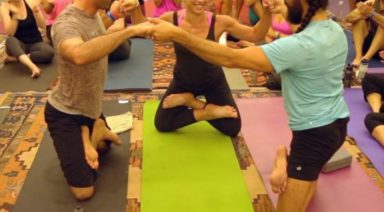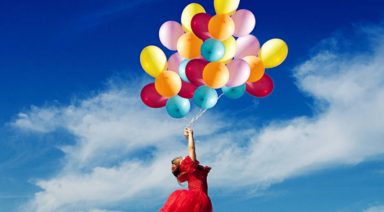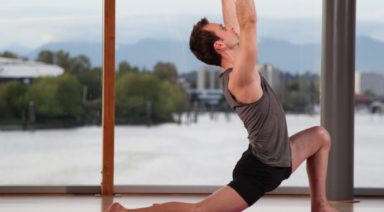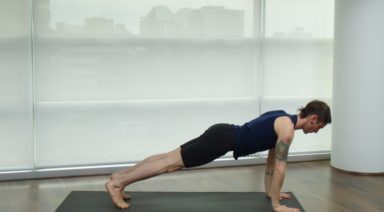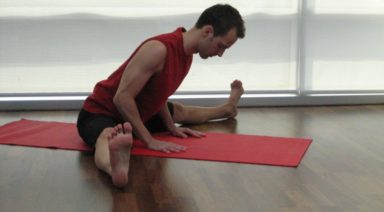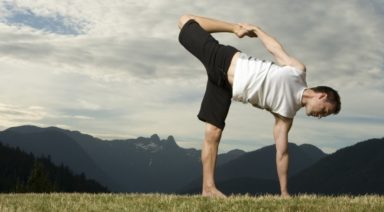Revolved Lunge | Yoga Pose
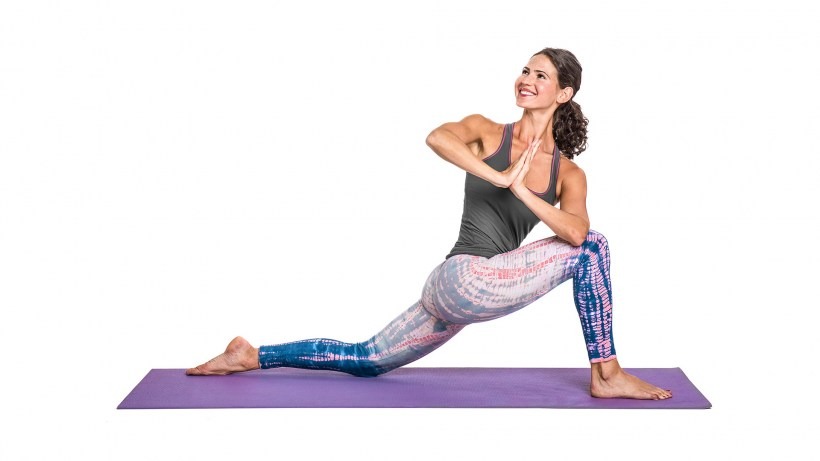
ADJUSTMENTS | BENEFITS | CONTRAINDICATIONS | MANTRA | MUDRA | PREP POSES | SANSKRIT | STEPS | TIPS
Parivrtta anjaneyasana (par-ee-vrt-tah Aan-Jha-Nay-AHS-anna), also known as the revolved lunge pose, is a twisted variation of lunge pose with several modifications and variations that develops stamina while improving your balance. During each exercise, make sure to maintain a focus on your breathing.
ADJUSTMENTS/MODIFICATIONS:
- Keep your gaze downward or forward if you have a neck injury.
- Lower your back knee down to the ground to lesson the intensity of this pose.
- Often considered a variation of this asana, parivrtta parsvakonasana uses a different arm position: the opposite arm rests on the lead leg or reaches to the ground, while the other arm extends overhead, creating a twist through the core of the body.
CONTRAINDICATIONS AND CAUTIONS:
Although this is a mild, restorative posture, you should check with a doctor before performing the pose if you have any of the following conditions:
- High or low blood pressure
- Knee injuries
- Spinal injuries
TIPS:
This pose stretches the quadriceps, abdominals, hips, and thighs. Go slowly and don’t push your body beyond its limits.
STEP-BY-STEP:
- Start in lunge pose, anjaneyasana, with your right leg forward. Bring your palms together at heart center. With your left knee lifted, push your left heel back and reach the crown of your head forward to lengthen your spine and side body.
- Take a deep inhalation. As you begin to exhale, twist toward your right leg. Notice if your left hip drops or rotates inward, and square it gently, twisting the torso instead of the hips.
- With your palms still together, place your left tricep on your right thigh, bringing your torso as close to your leg as possible to bring length to the pose.
- Push your palms together to engage your arms and try to twist in deeper, sending your chest in the direction of the ceiling and, lastly, shifting your gaze upward over your right shoulder.
- Stay here, or extend your left fingertips down to the ground on the outside of your right leg, and reach your right fingertips up to the ceiling.
- Hold this pose for up to one minute. To exit, unwind with your breath, and place your hands down on the mat, then step back to downward-facing dog. Repeat with your left leg forward.
PREPARATORY POSES:
- Parivrtta Trikonasana
- Baddha
- Upavistha Konasana
- Virasana and its Reclining Variation
- Gomukhasana
SANSKRIT:
- Parivrtta: to turn around, revolve
- Anjaneya: salutation
- Asana: pose
PHILOSOPHY & ORIGIN:
Traditionally, the parivrtta anjaneyasana has been believed to activate the third chakra, or manipura. This chakra is the body’s center of energy and vitality. It is a source of confidence, internal strength, and courage, and activating the manipura chakra through this pose is believed to shield and counter against fear and insecurity.
PHYSICAL BENEFITS:
- Strengthens the quadriceps and gluteus muscles
- Stimulates abdominal organs
- Improves digestion and elimination
- Stretches the psoas and hips
- Relieves sciatic pain
ENERGETIC BENEFITS:
- Develops stamina and endurance in your thighs
- Improves your balance, concentration, and core awareness
MANTRA:
Shanti Mantra
This mantra is a chant for peace and is used to call for and usher peace into our daily lives.
Pronunciation: sarvesham svastir bhavatu sarvesham shantir bhavatu sarvesham purnam bhavatu sarvesham mangalam bhavatu
Translation: May there be well-being for all. May there be peace for all. May there be wholeness for all. May there be happiness for all.
MUDRA: ANJALI MUDRA
This mudra is also known as the prayer mudra and involves bringing both hands together by pressing the palms together firmly and evenly with fingertips and thumbs pointing toward the sky.
Benefits:
- Balances both the left and right hemispheres of the brain
- Helps rejuvenate the vagus nerve (one of the nerves within the nervous system that goes to the pineal gland in front of the body)
- Helps balances out the pineal gland and pituitary gland
- A holistic remedy for stress, depression, and anxiety
- Can be used to stimulate the anahata (heart) chakra and the ajna (third-eye) chakra
- Helps connect you with your inner divine self, with spirituality/divinity, and with other beings
- Helps you enter into a deeper meditative state (Source)
Legal Disclaimer Before participating in any exercise program or using any fitness products or services that may be described and/or made accessible in or through the Gaia Website and/or the Services, you should consult with a physician or other healthcare provider. Read more about Gaia’s Terms Of Use.
Virabhadrasana III: Warrior III Pose
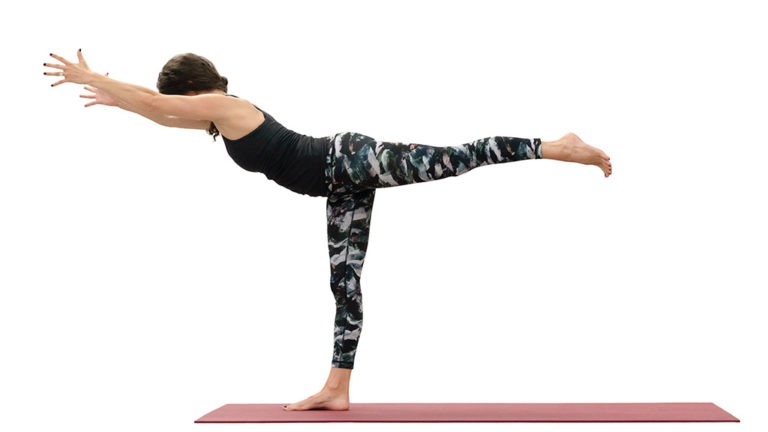
ADJUSTMENTS | BENEFITS | SEQUENCING | SANSKRIT | STEPS
Warrior III, or virabhadrasana (veer-ah-bah-DRAHS-ah-nah) III, is a challenging pose of balance and strength.
Philosophy + Origin
A fierce warrior, Virabhadra is often depicted as having a thousand heads, eyes, and feet. Draped in the skin of a tiger, this warrior wields a thousand clubs. In Virabhadra’s origin story, he is created from a single dreadlock from Shiva’s head, a manifestation of the rage he feels upon feeling like his true love has died. The shape of virabhadrasana III comes from this story, the moment when Virabhadra beheads the king Daksha and extends forward to place the head on a stake.
Despite the outward appearance and violent origin, this powerful pose is actually a great reminder of our own inner strength and the measures we would take in the name of true love.









